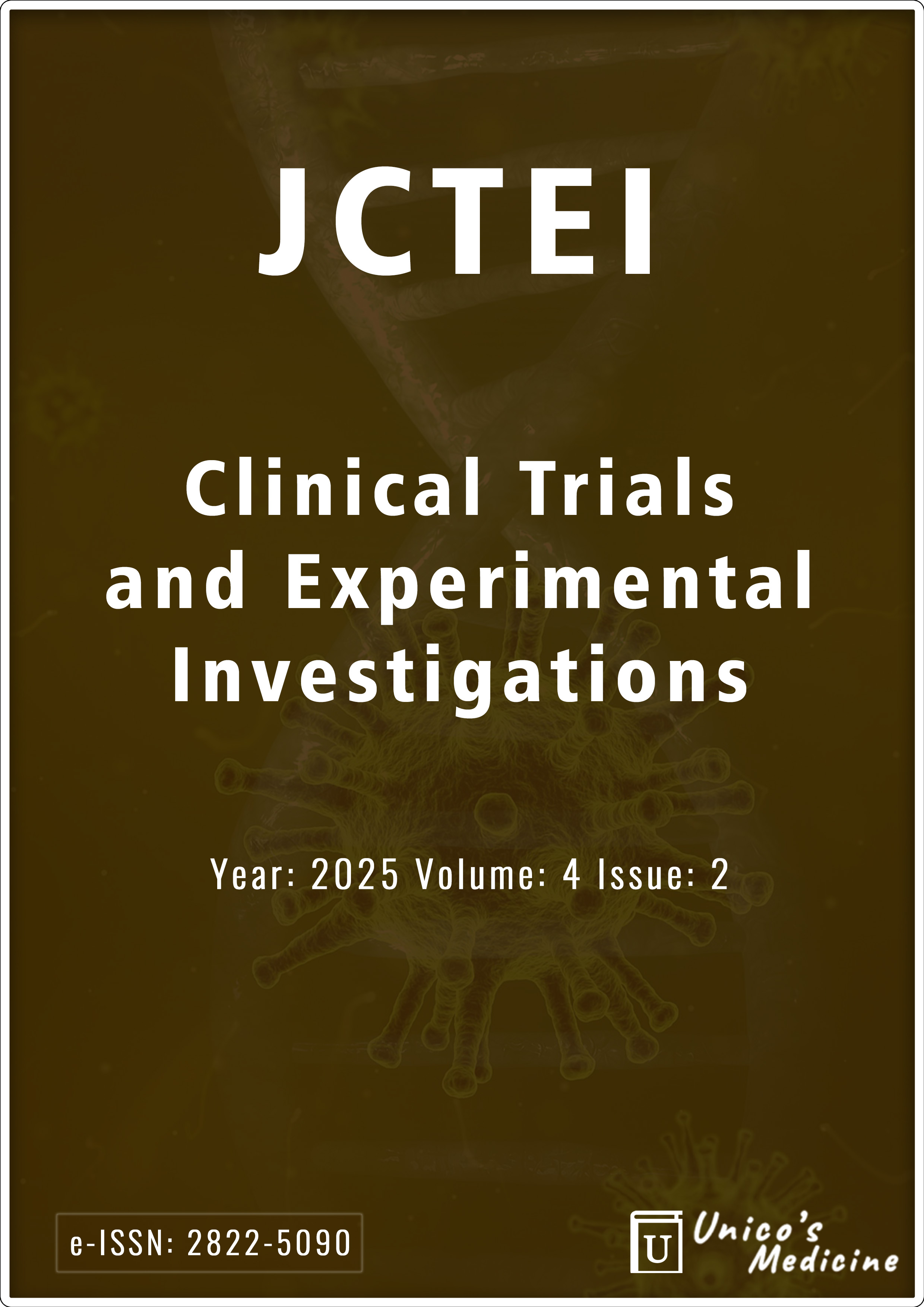Priapism as an initial clinical manifestation in hematological disease: A case report and literature review
DOI:
https://doi.org/10.5281/zenodo.16878565Keywords:
Priapism, penil erection, hematological diseaseAbstract
Priapism is defined as an erection lasting more than 4 hours and is considered a urological emergency in pediatrics. The goal of treatment is to prevent both short and long-term erectile dysfunction. The incidence in boys has not yet been estimated because priapism is considered a rare clinical manifestation. A 15-year-old male was transferred to our clinic with priapism of 48 hours' duration, following two unsuccessful attempts to drain the corpora cavernosa at another facility. Preoperative evaluation revealed hyperleukocytosis with leukemic blasts in peripheral blood, prompting a hematology consultation for a multidisciplinary approach. In the operating room, aspiration and lavage of the corpora cavernosa were performed. Due to unsatisfactory results, a percutaneous shunt procedure was attempted, followed by a corpora cavernosa–spongiosum shunt. Postoperatively, hematology continued to monitor the patient, eventually diagnosing him with type B lymphoblastic leukemia as the underlying cause of the priapism episode. Priapism is an uncommon clinical manifestation in the onset of systemic diseases, with hematological causes being the primary etiology. The diagnosis is clinical, based on a comprehensive medical history, physical examination, and complementary studies, including blood gas analysis of the corpora cavernosa and penile color Doppler ultrasound. Treatment is staged, beginning with patient stabilization and pain control, followed by more invasive surgical interventions if necessary. The understanding and management of priapism in children remain challenging for healthcare providers, and further studies are needed to ensure timely and effective management.
References
Patel SR, Reddy A, Dai M, Passoni N, Khera M, Koh CJ. Is urgent surgical management necessary for priapism in pediatric patients with hematologic conditions? J Pediatr Urol. 2022;18(4):528.e1-528.e6.
Donaldson JF, Rees RW, Steinbrecher HA. Priapism in children: a comprehensive review and clinical guideline. J Pediatr Urol. 2014;10(1):11-24.
Jesus LE, Dekermacher S. Priapism in children: review of pathophysiology and treatment. J Pediatr (Rio J). 2009;85(3):194-200.
Rodríguez Villalba R, Garcia S, Puigvert Martínez A, Pomerol I Montseny JM, Munárriz R. Priapismo [Priapism]. Actas Urol Esp. 2005;29(10):961-8.
Becerra-Pedraza LC, Jiménez-Martínez LE, Peña-Morfin I, Nava-Esquivel R, Villegas-Martínez JA. Priapism as the initial sign in hematologic disease: Case report and literature review. Int J Surg Case Rep. 2018;43:13-7.
Karagözlü Akgül A, Uçar M, Özçakır E, Balkan E, Kılıç N. Rare emergency in children: Priapism and stepwise treatment approach. Ulus Travma Acil Cerrahi Derg. 2022;28(4):464-70.
Bondil P, Carnicelli D. Tratamiento quirúrgico del priapismo. Urología. 2017;49(4):1-11.
Downloads
Published
How to Cite
Issue
Section
License
Copyright (c) 2025 Journal of Clinical Trials and Experimental Investigations

This work is licensed under a Creative Commons Attribution 4.0 International License.
![]() The journal is licensed under a Attribution4.0 International (CC BY 4.0).
The journal is licensed under a Attribution4.0 International (CC BY 4.0).











